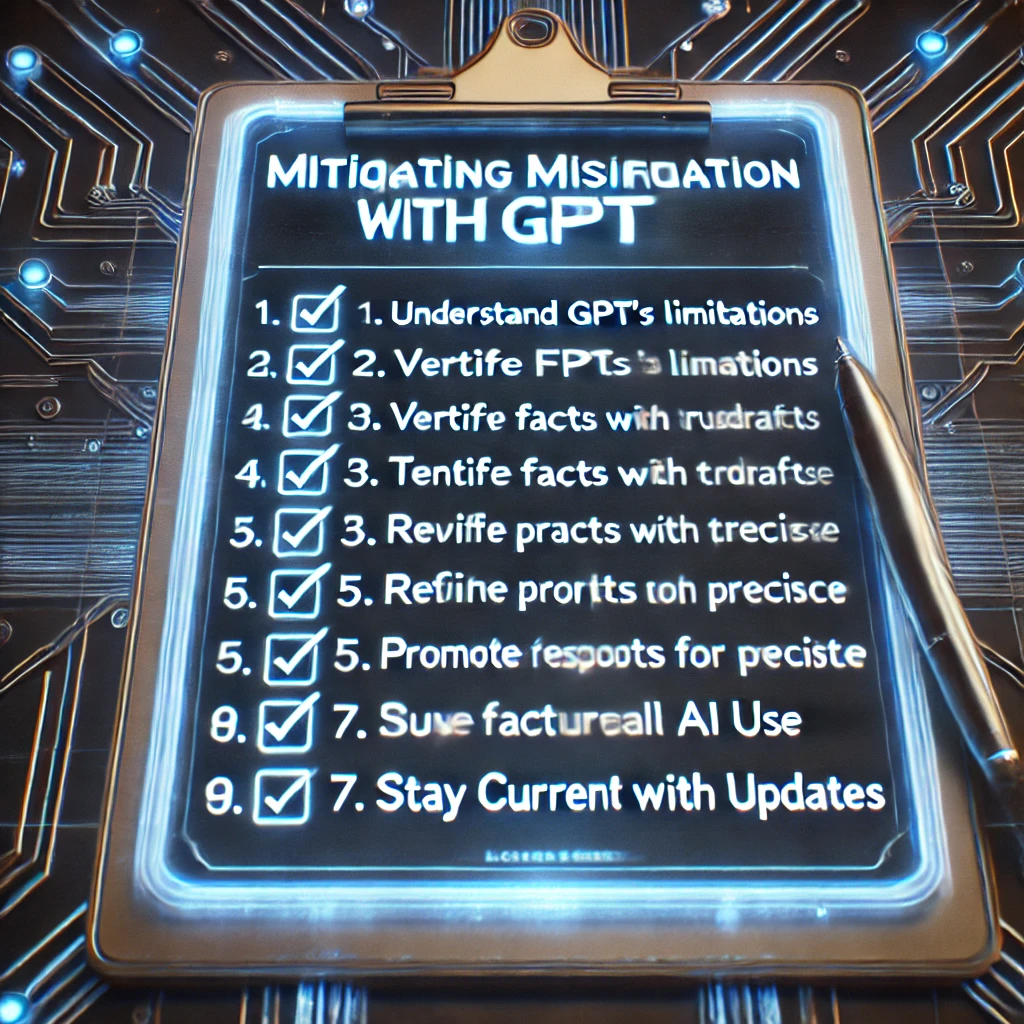
In a world where AI tools like ChatGPT are becoming increasingly common, ensuring the accuracy of AI-generated content is more critical than ever. While GPT can be an invaluable tool for ideation, drafting, and creative work, it’s essential to know when to cross-check and verify its outputs. Here’s a practical guide to help you navigate this challenge effectively.
Types of GPT-Produced Content and Verification Needs
Not all GPT-generated content requires the same level of scrutiny. Here’s a breakdown to guide your approach:
Content Types That Need Cross-Checking and Verification:
- Historical Facts: Always confirm key dates, events, and interpretations with reliable sources.
- Statistical Data: Verify numbers, percentages, and trends from authoritative datasets.
- Scientific Information: Cross-reference findings with peer-reviewed research.
- Legal and Financial Advice: Consult experts or official regulations before acting on GPT’s output.
- News or Current Events: Use trusted news sources to validate details.
- Medical or Health-Related Information: Double-check with licensed professionals or reputable health organizations.
- Sensitive or Controversial Topics: Ensure accuracy and context to avoid spreading misinformation.
Realms Where Less Verification May Be Acceptable:
- Creative Writing: Fiction, poetry, or brainstorming ideas for storytelling.
- Marketing Copy: General taglines, ad ideas, or creative content drafts.
- Personal Reflections: Opinion pieces or subjective interpretations.
- Non-Factual Content: Generic suggestions for recipes, DIY projects, or hobby-related tips.
- Casual Conversations: Fun or informal uses, like icebreakers or riddles.

7 Strategies for Mitigating Misinformation
Now that you know what to verify, here are actionable steps to ensure accuracy in GPT outputs:
1. Set Clear Expectations
- Understand GPT’s Role: ChatGPT generates responses based on patterns in training data, not verified facts.
- Clarify Its Limitations: Use GPT for ideation and drafting, not as a final authority.
2. Fact-Check Responses
- Cross-verify details with trusted and reputable sources.
- Always double-check statistics, dates, and sensitive information.
3. Use GPT as a First Draft, Not a Final Product
- Treat AI-generated content as a starting point.
- Edit and refine content before sharing or publishing.
4. Refine Prompts for Accuracy
- Be specific: Provide clear context to guide GPT toward reliable content.
- Request neutrality: Ask for balanced perspectives to reduce bias.
5. Implement Verification Steps
- Use scripts or plugins that integrate fact-checking APIs alongside GPT outputs.
- Highlight potential uncertainty or speculation in GPT responses.
6. Encourage Responsible Use
- Educate teams or clients on GPT’s capabilities and limitations.
- Be transparent about when and how AI was used in creating content.
7. Stay Updated
- Use the latest versions of GPT, as newer models may incorporate fewer biases.
- Supplement GPT outputs with real-time tools for the most accurate information.
Final Thoughts
Mitigating misinformation isn’t just about fact-checking—it’s about fostering a responsible approach to using AI. By understanding when to verify, refining your prompts, and staying transparent about AI’s role in your work, you can harness GPT’s potential without spreading inaccuracies.
AI is a powerful tool, but it’s up to us to use it responsibly. Let’s make it a tool for empowerment, not confusion.
Do you have your own strategies for fact-checking AI outputs? Share them in the comments or reach out—I’d love to hear your thoughts!